
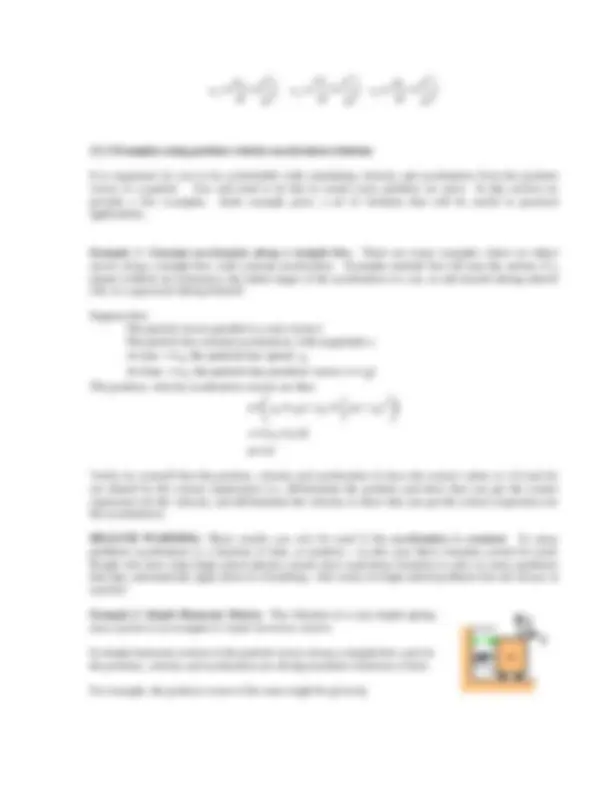
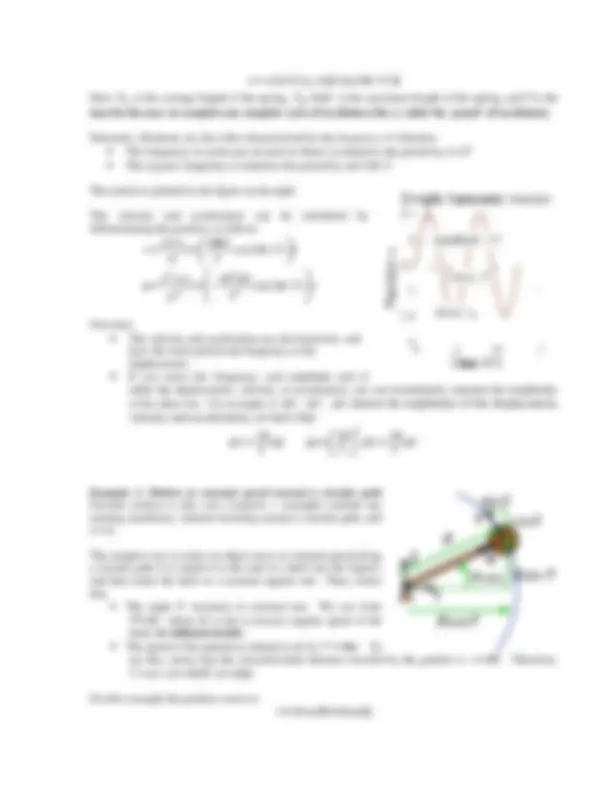
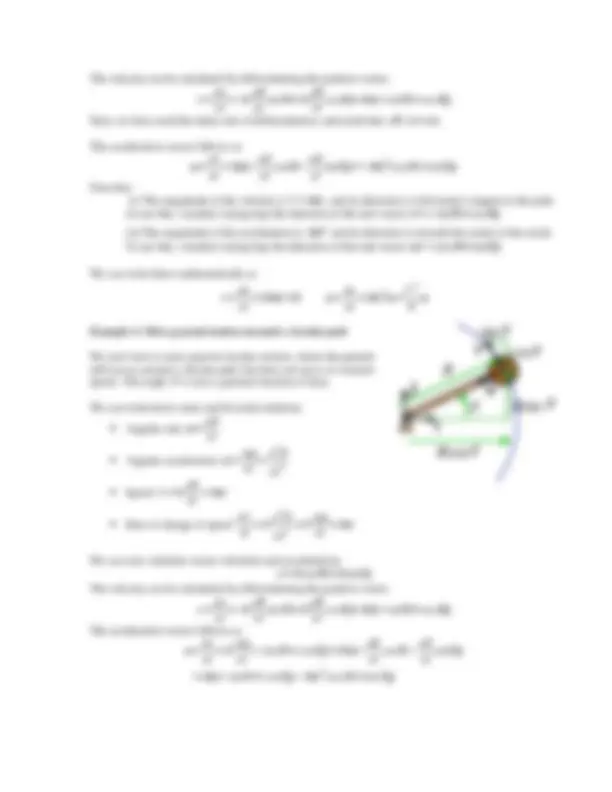
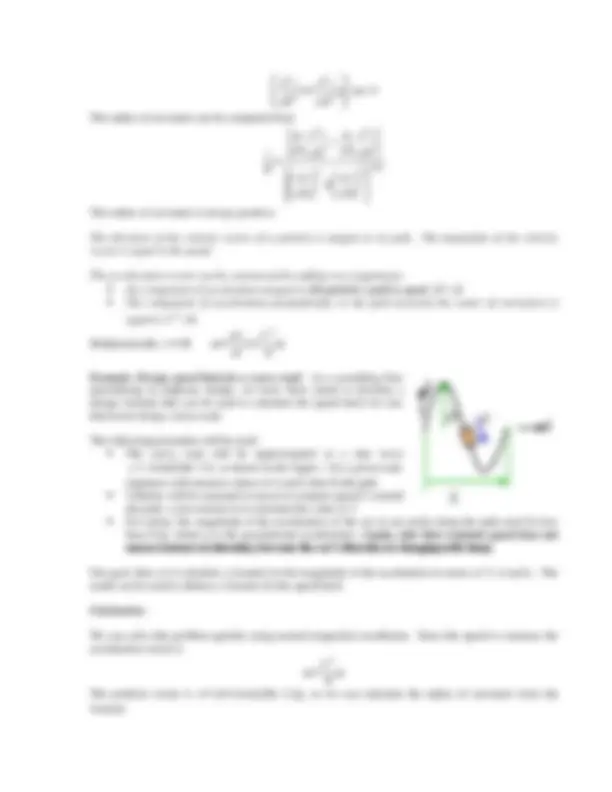
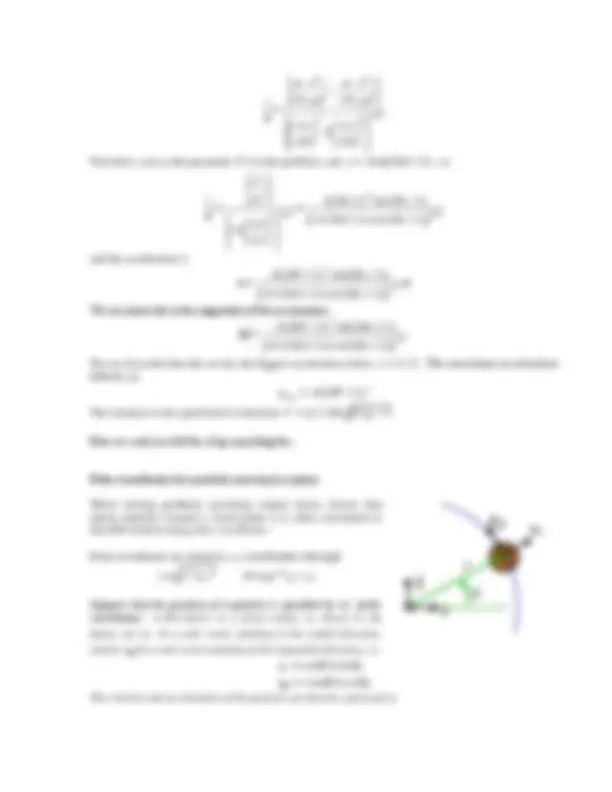
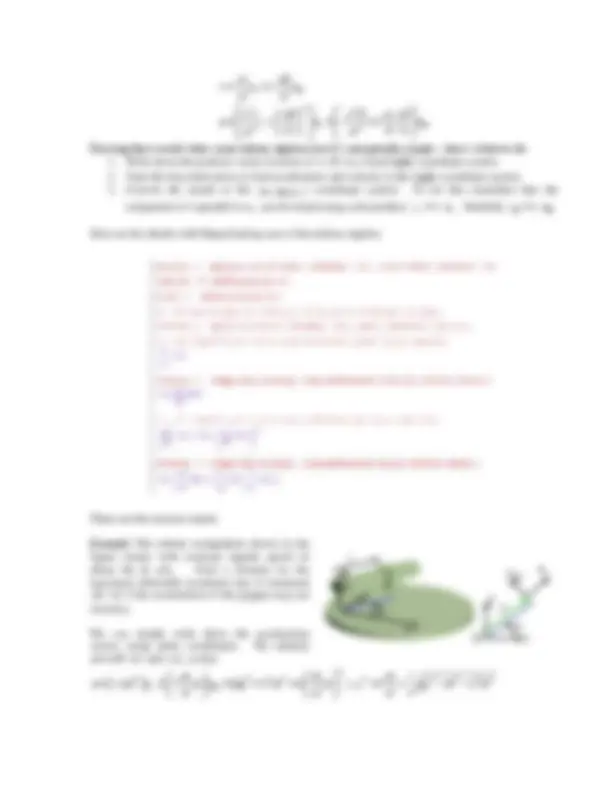
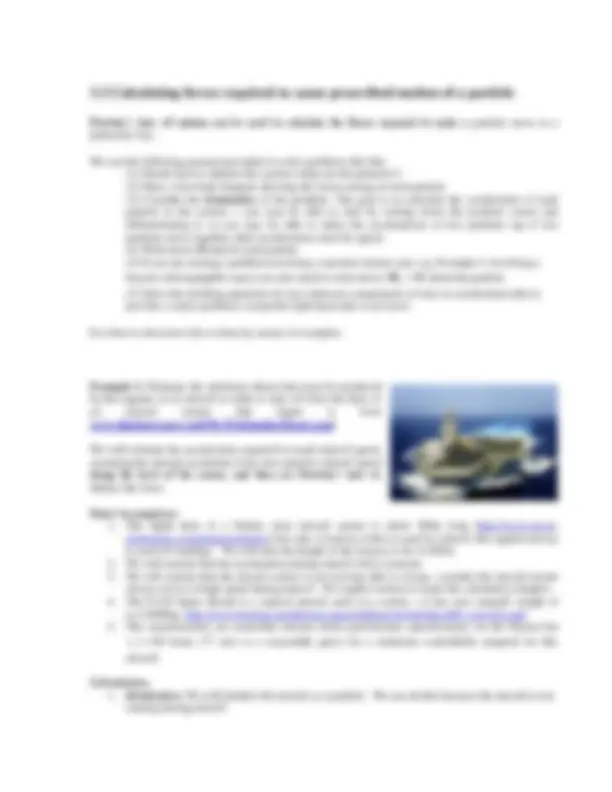
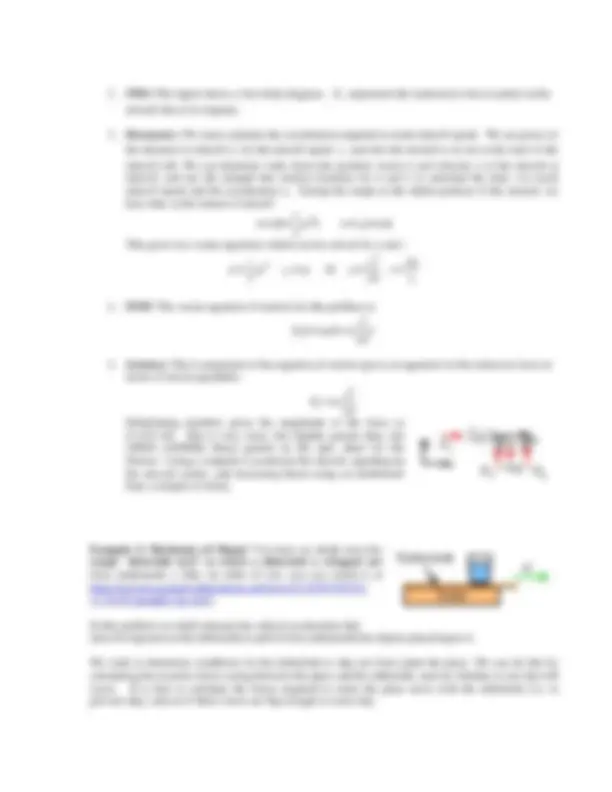
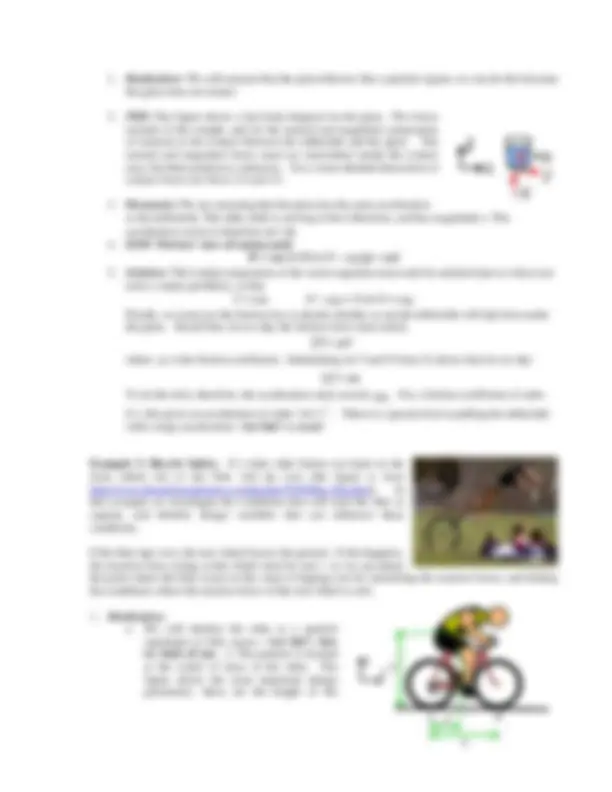
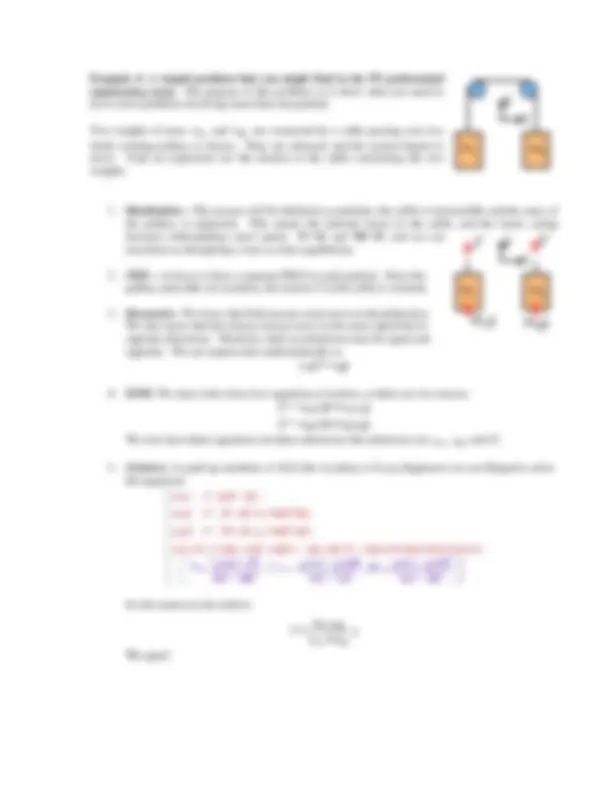

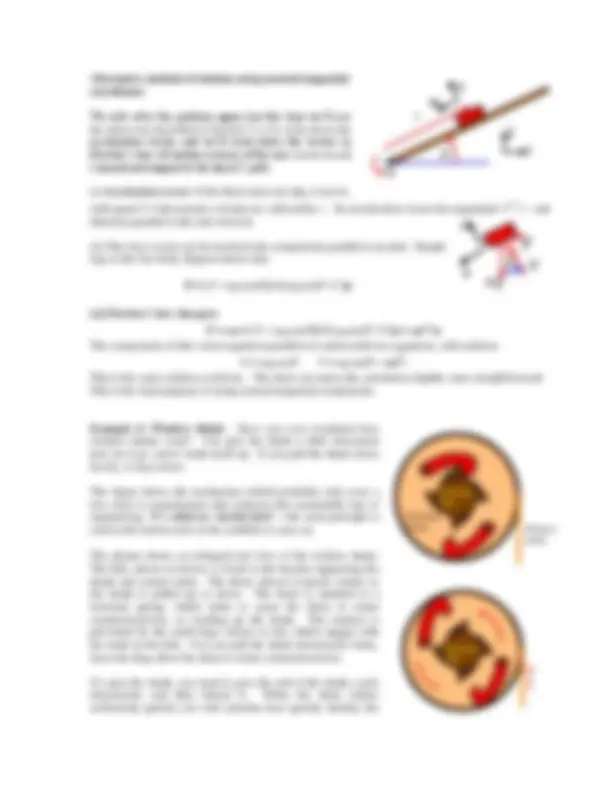
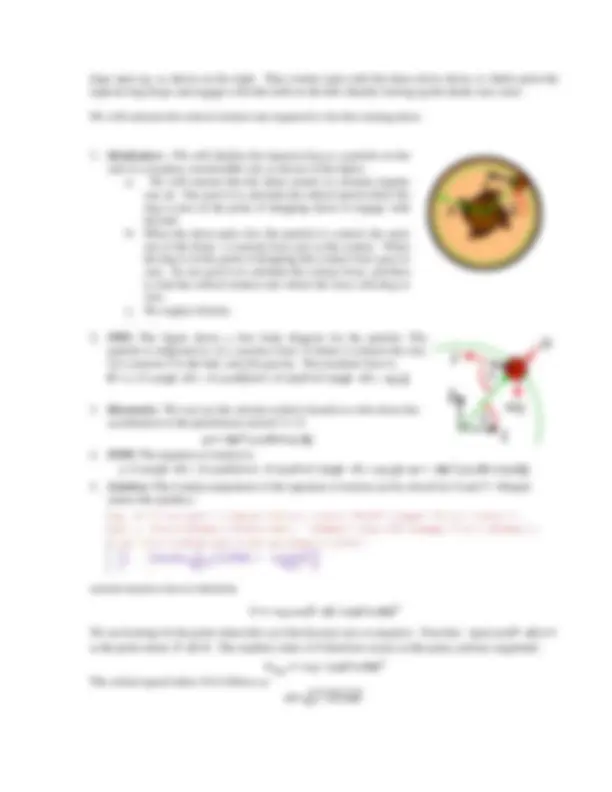
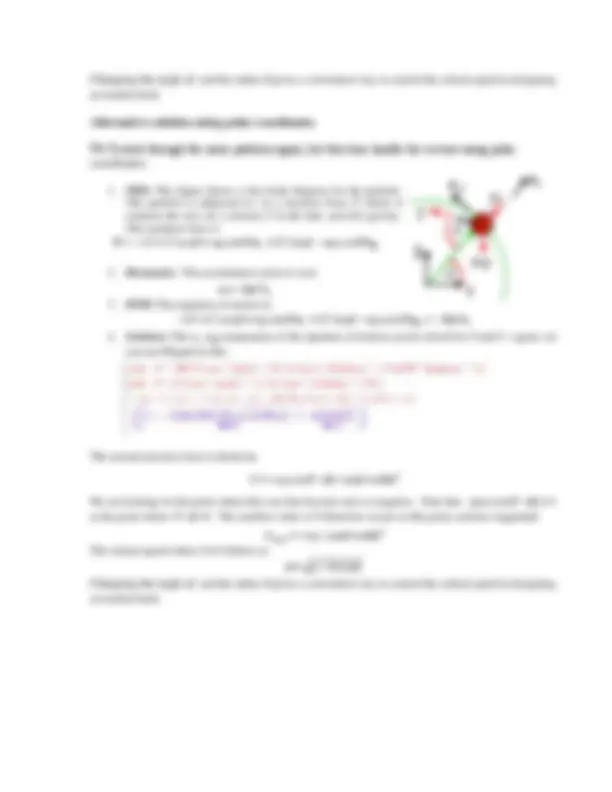
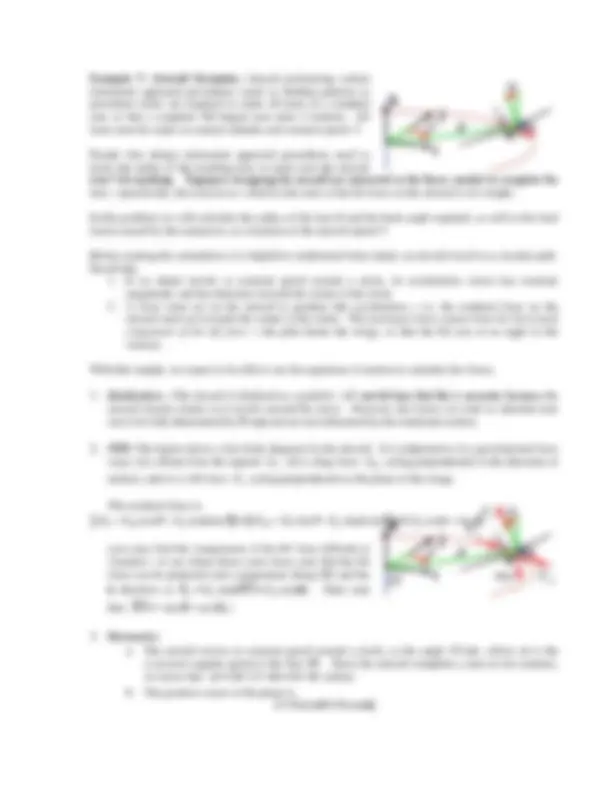
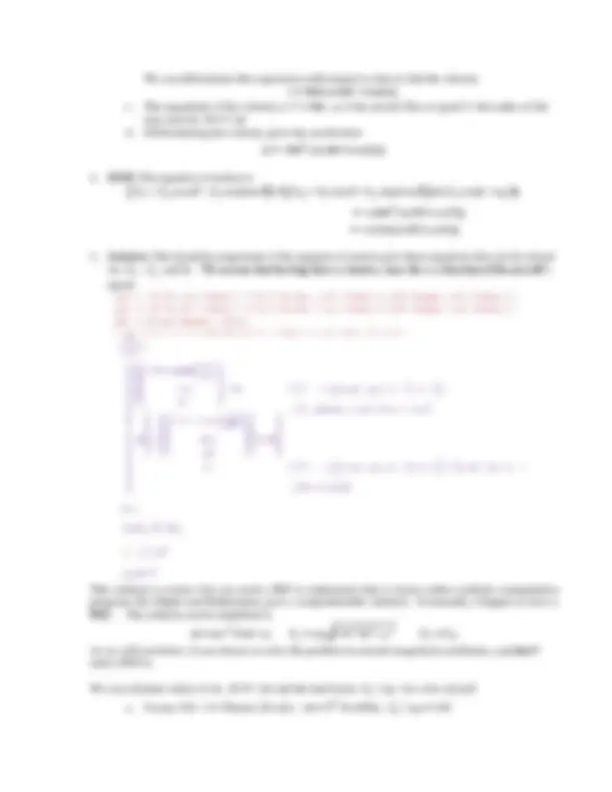
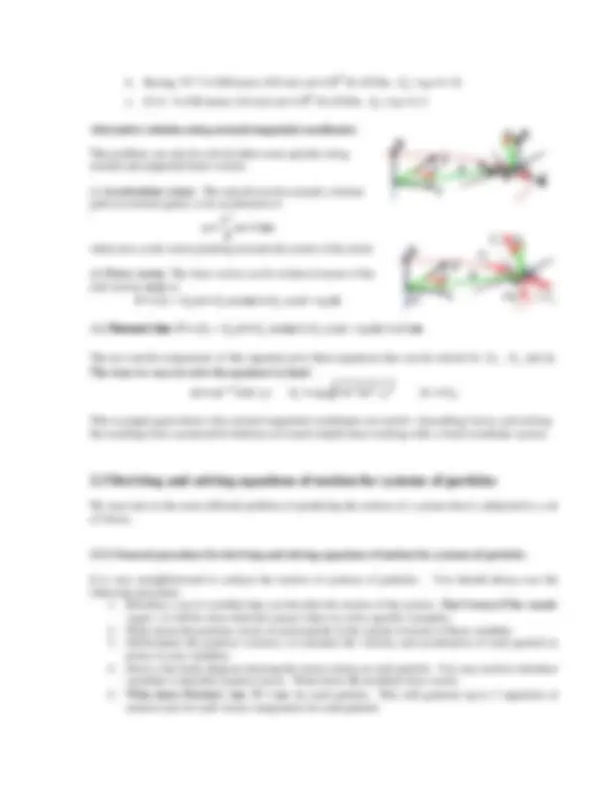
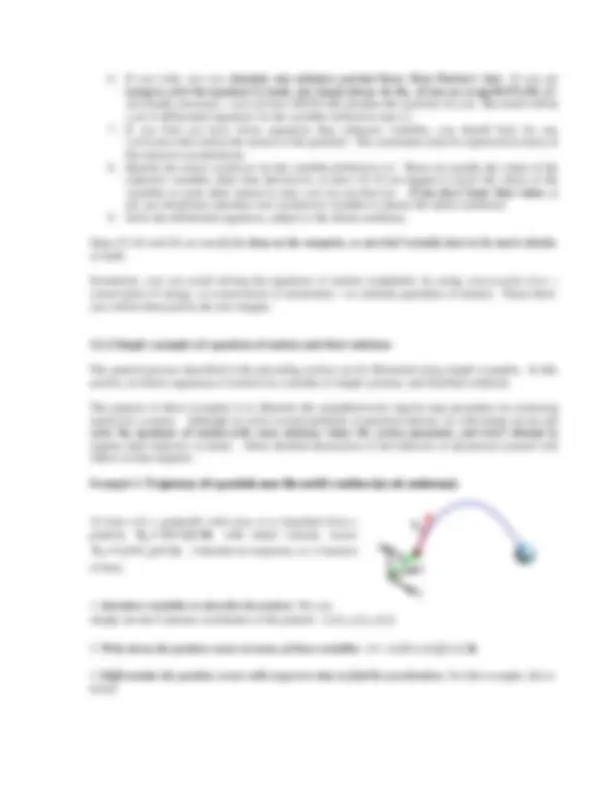
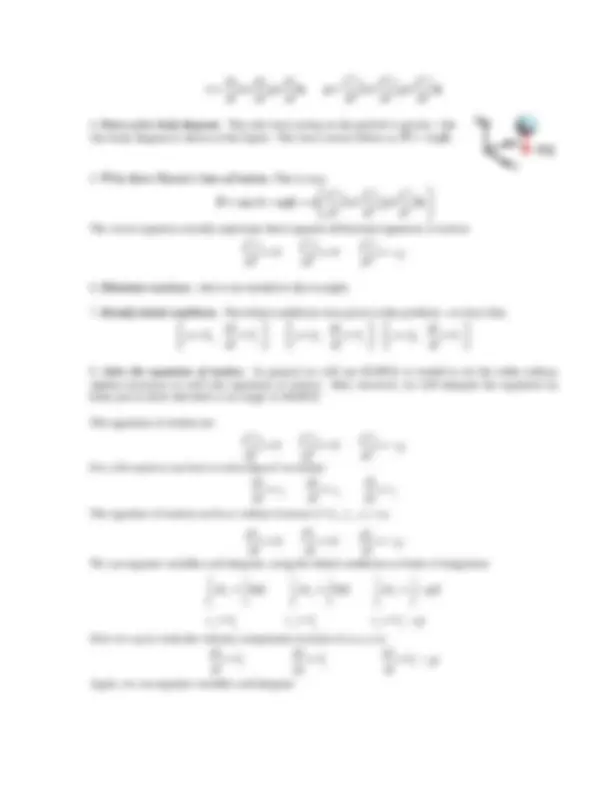
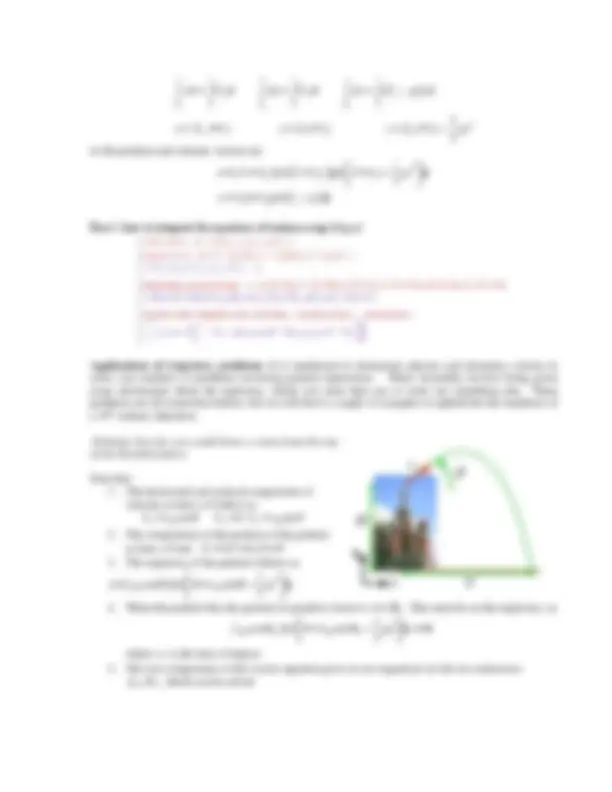
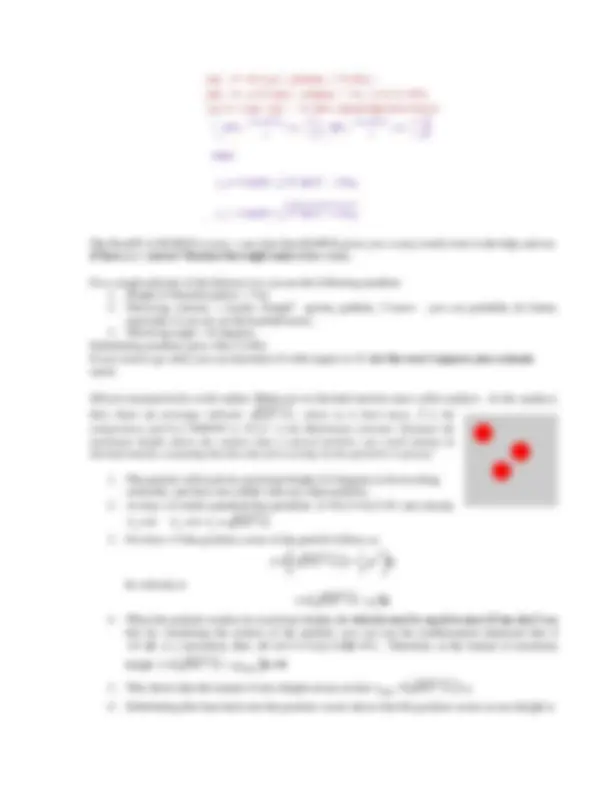
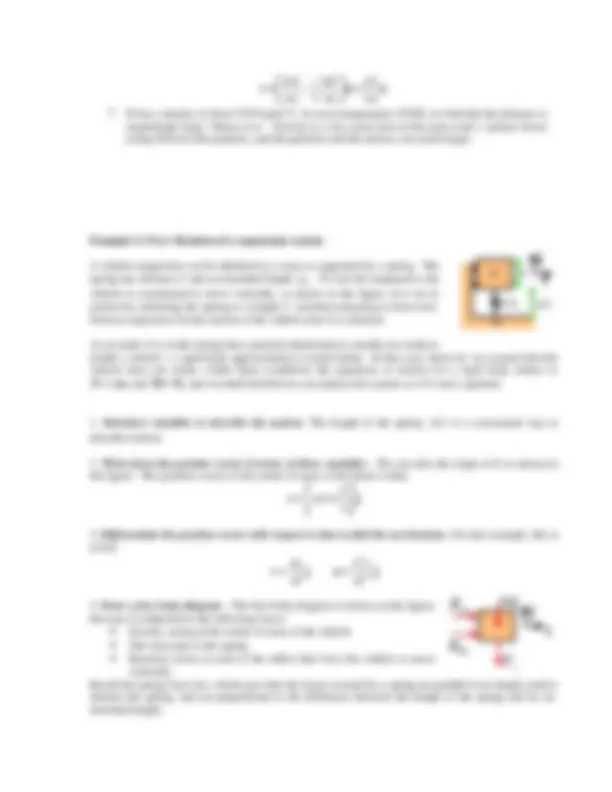
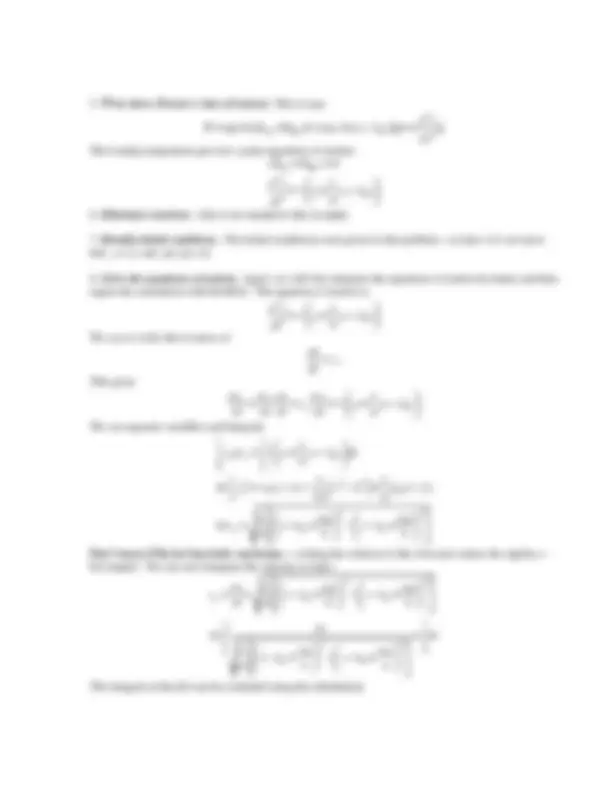
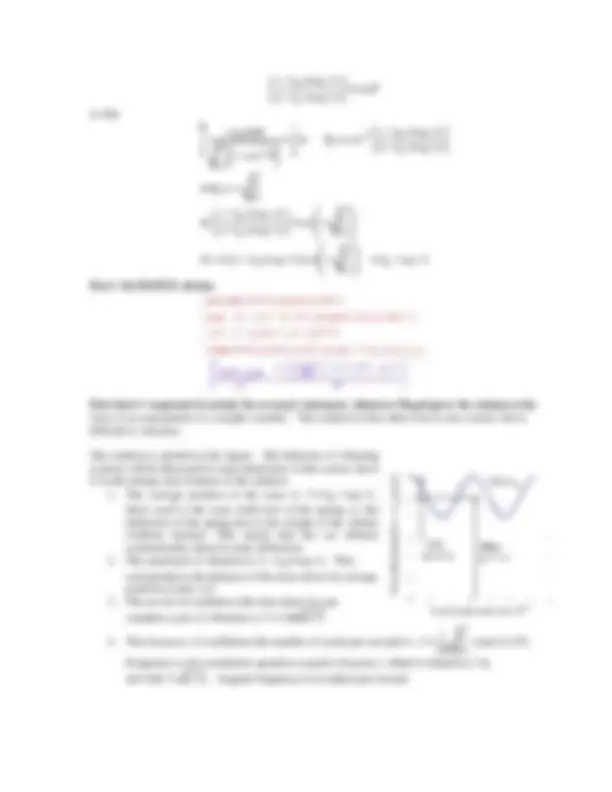
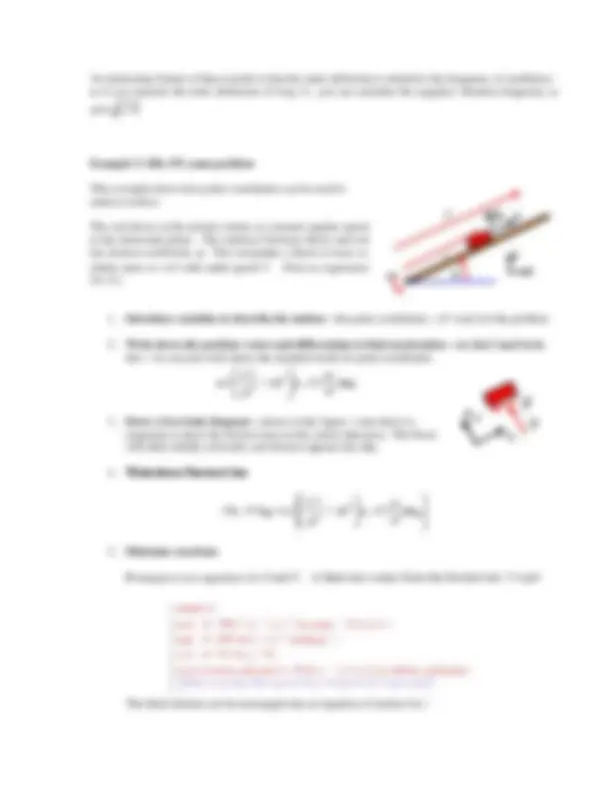
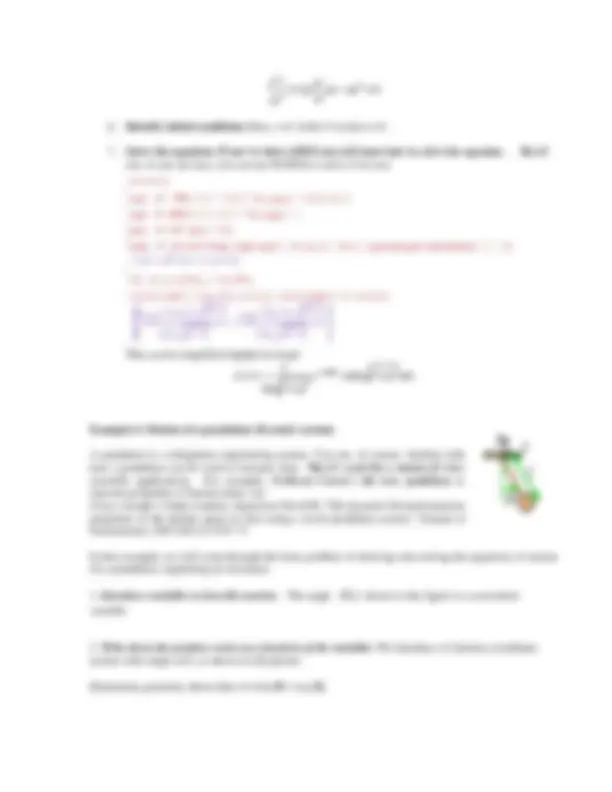
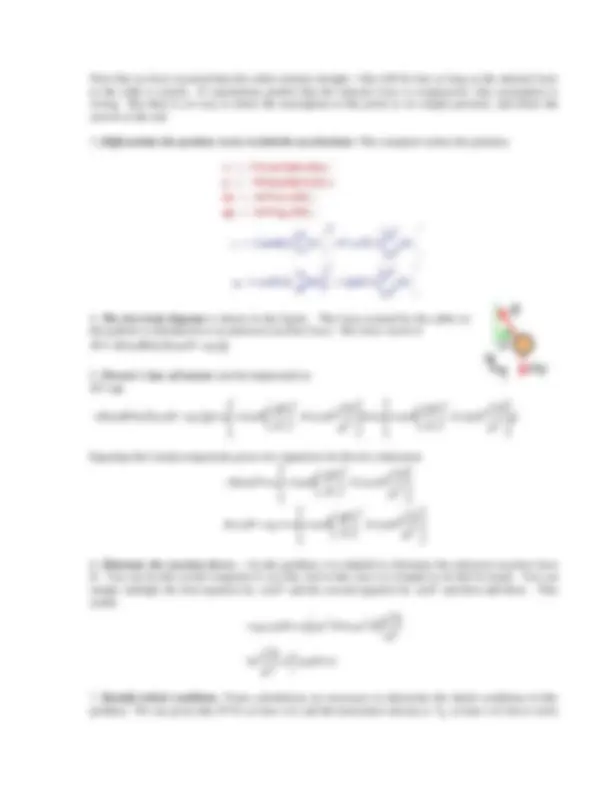
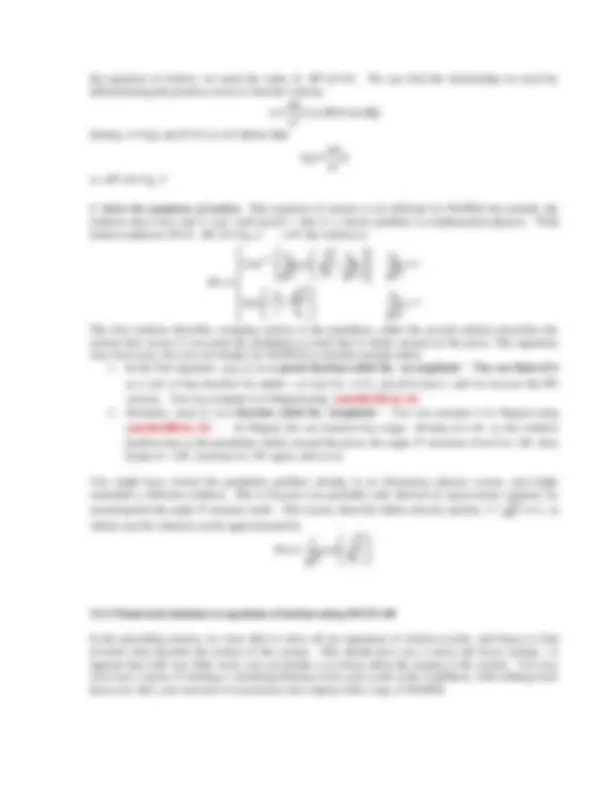
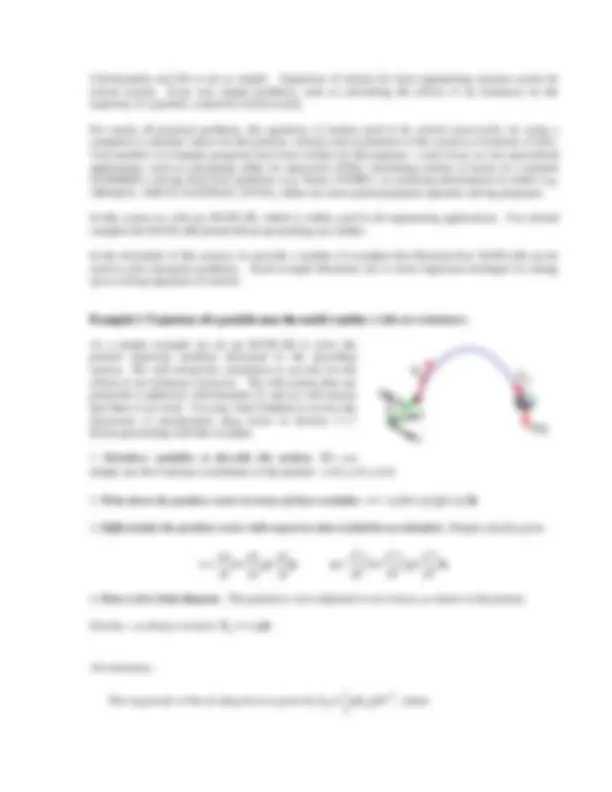
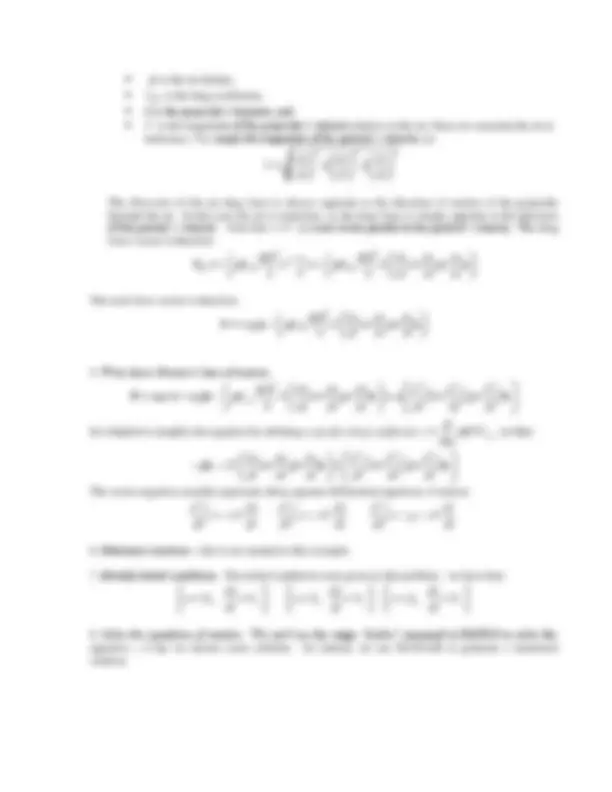
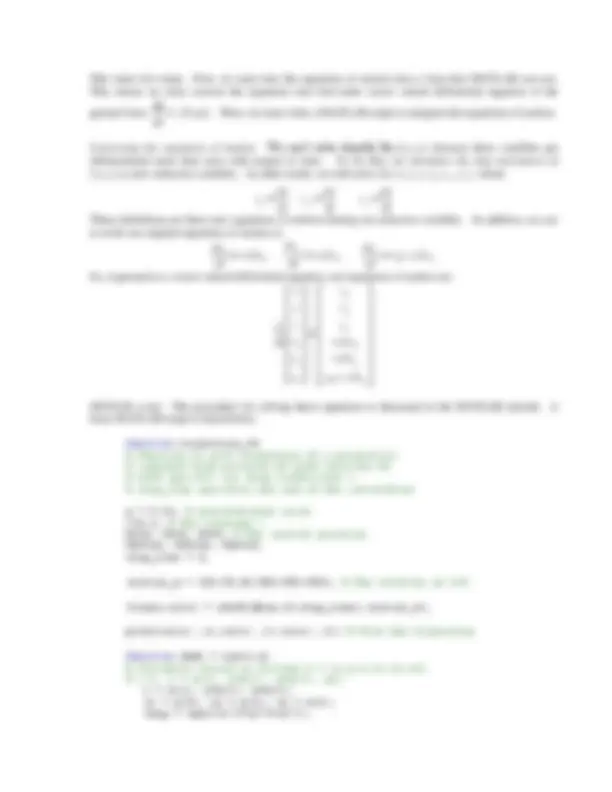
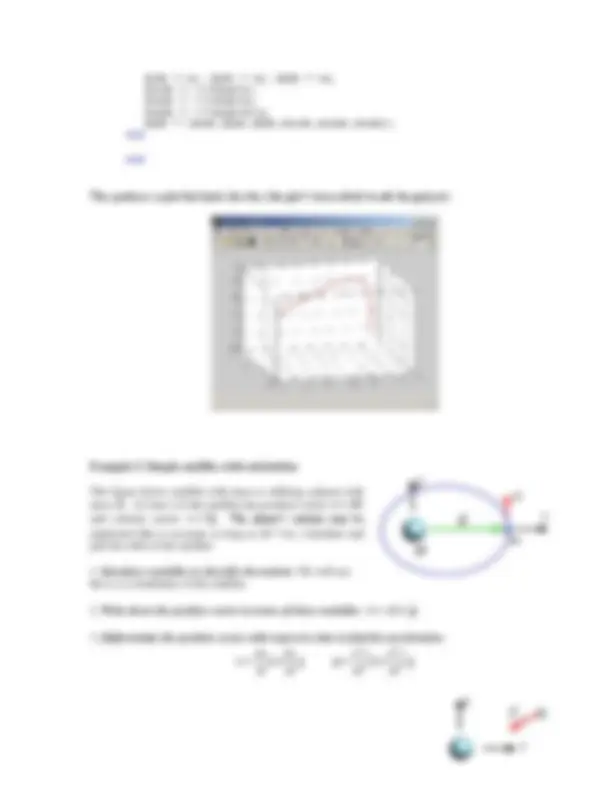
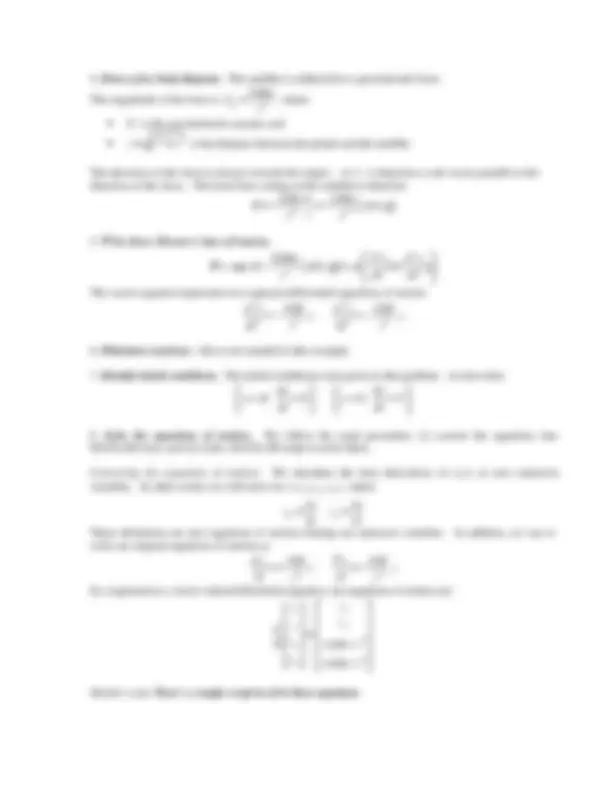
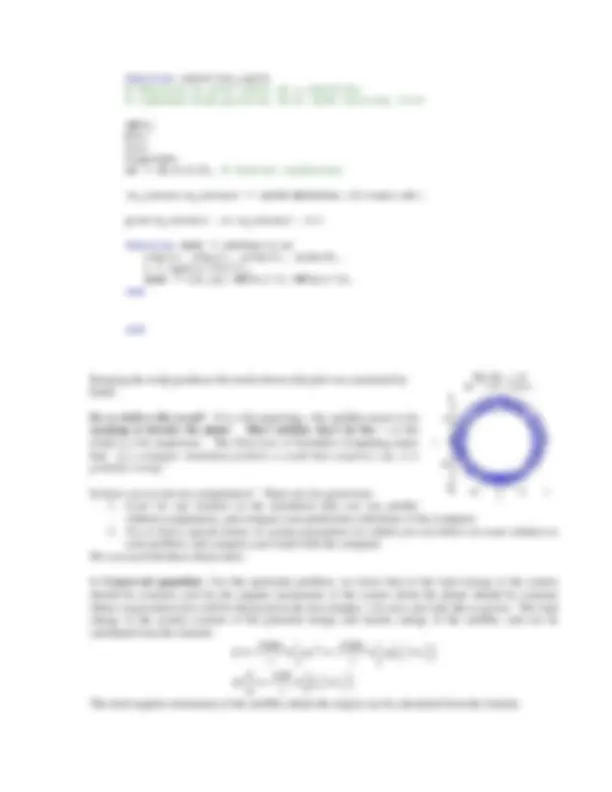
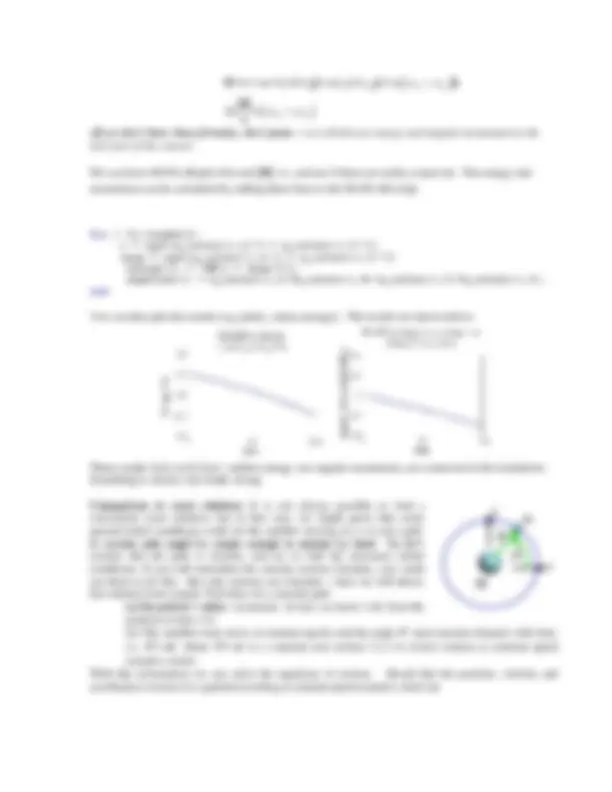
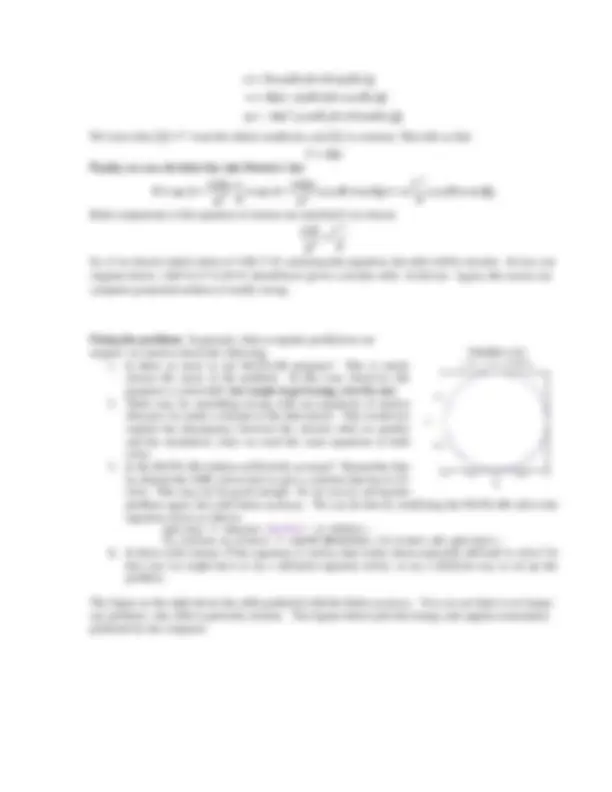
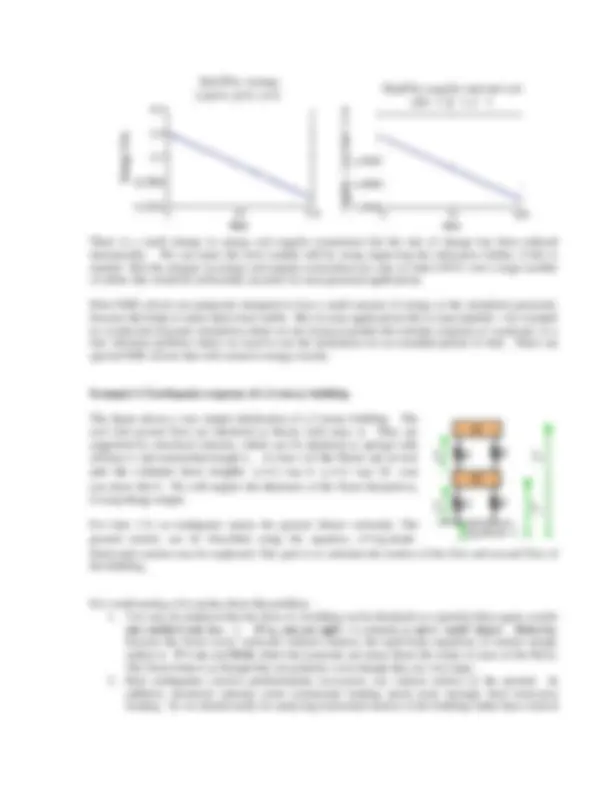
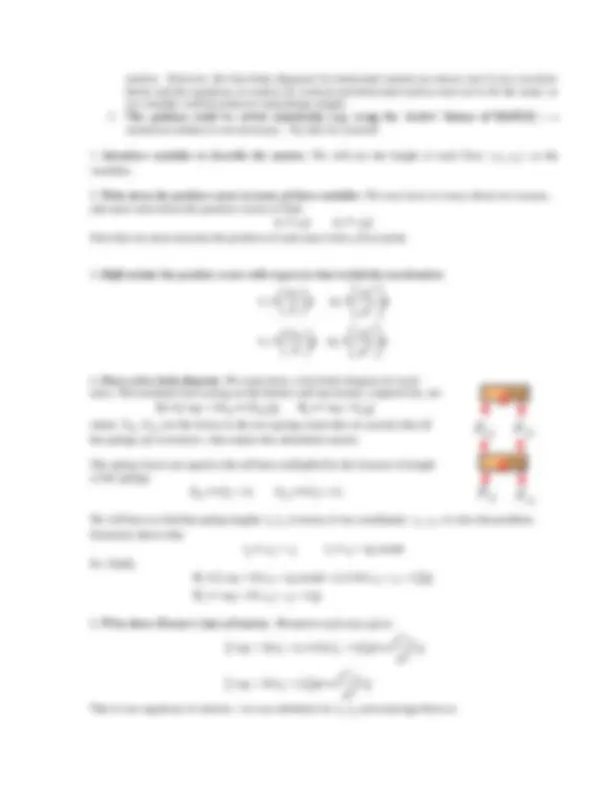
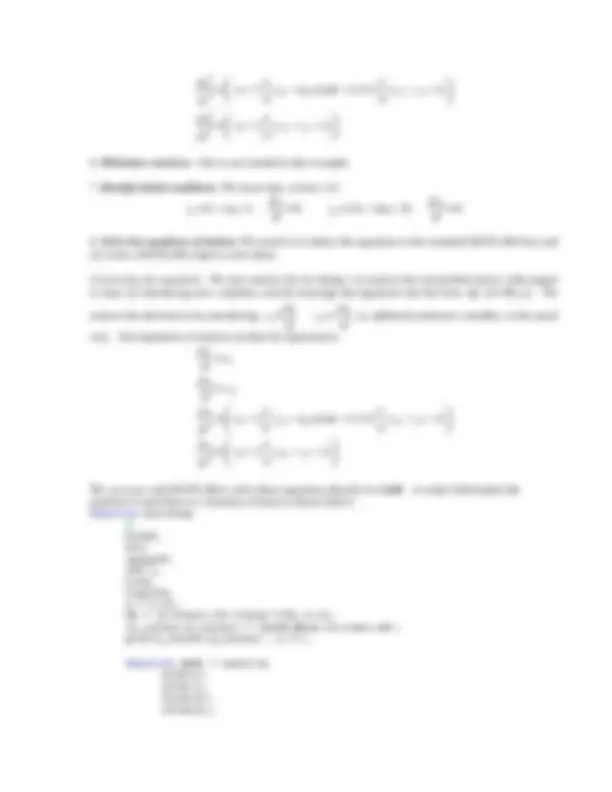
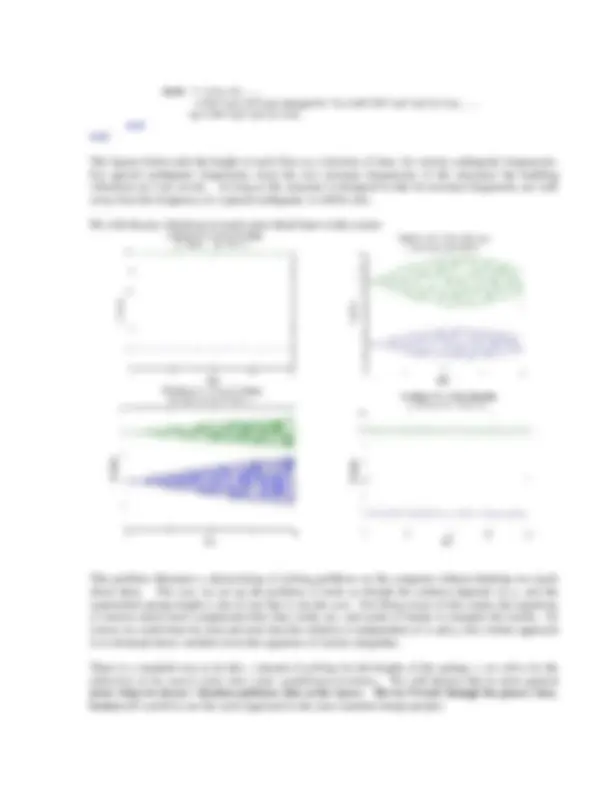
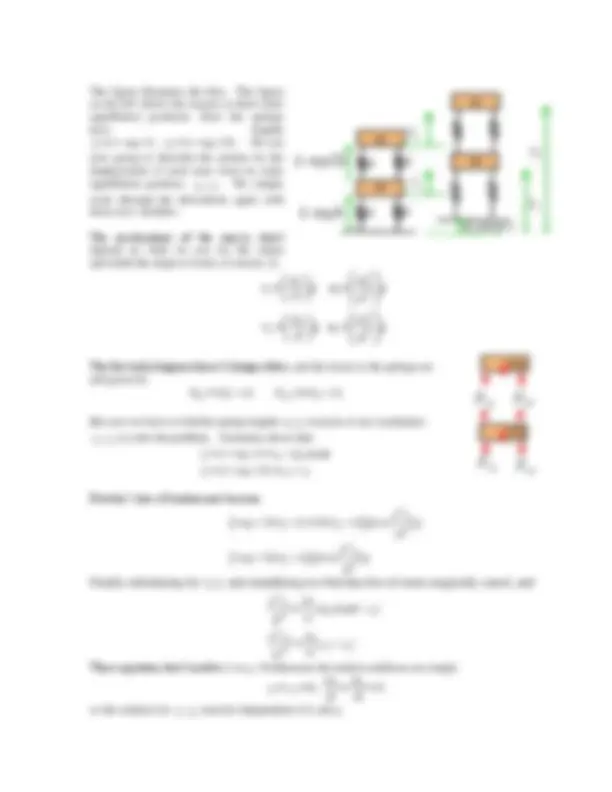
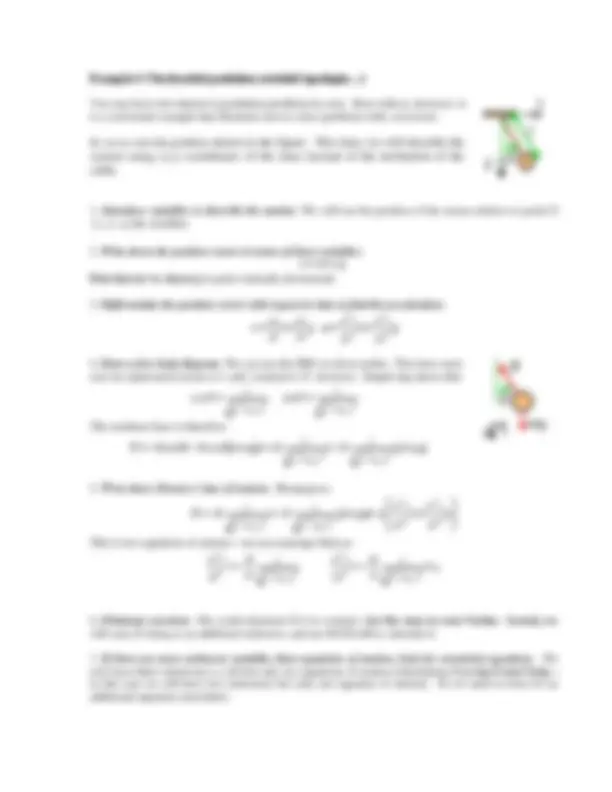
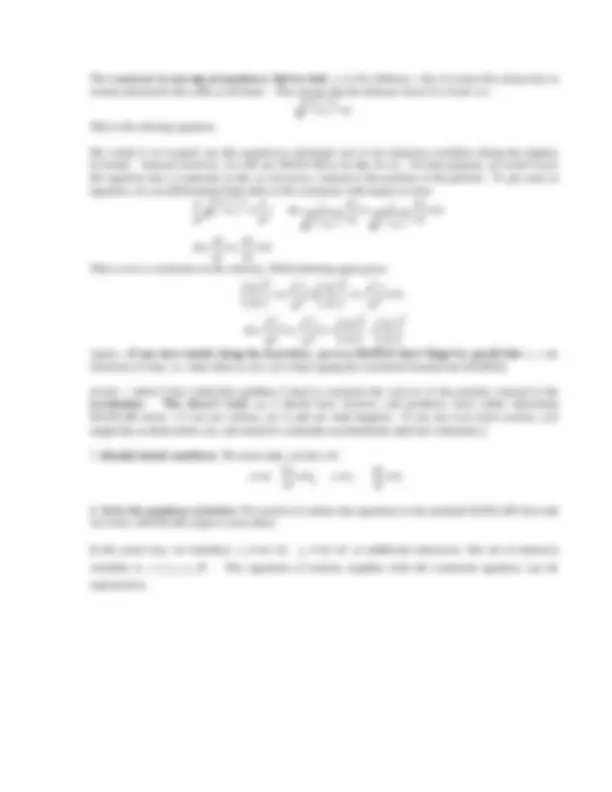
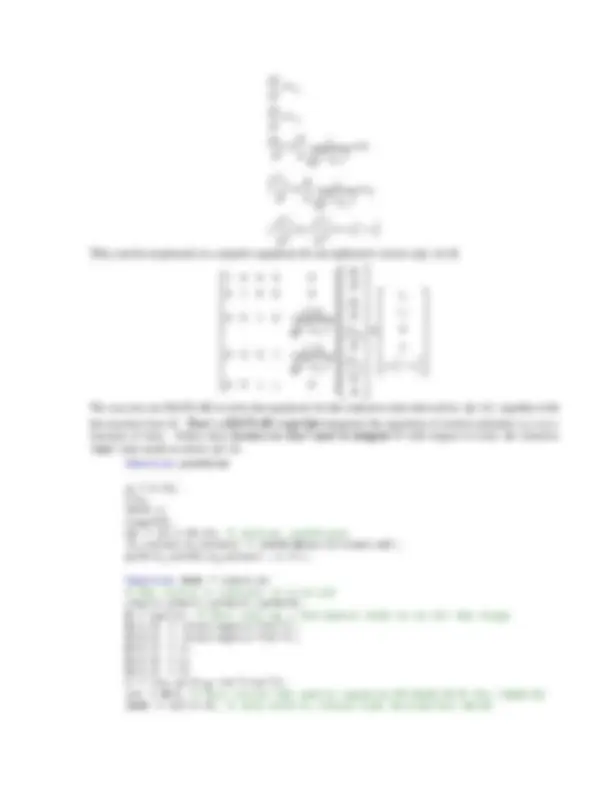
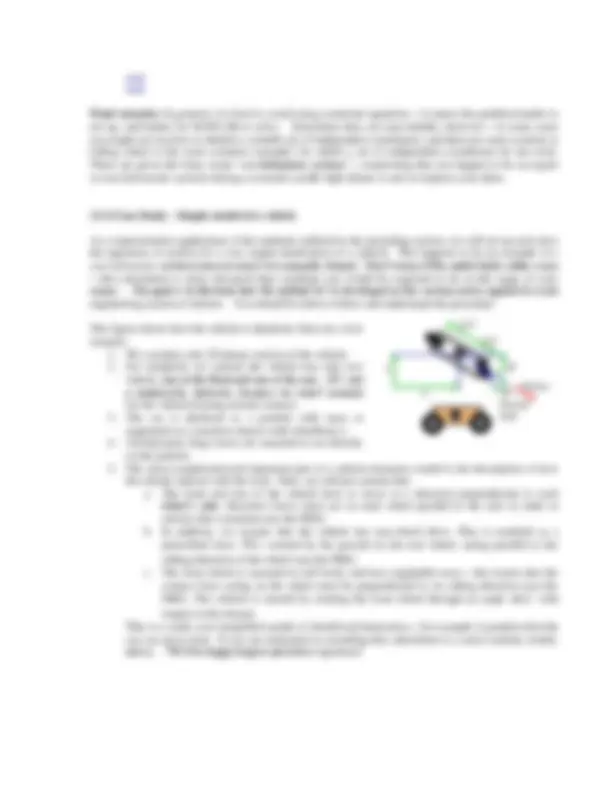
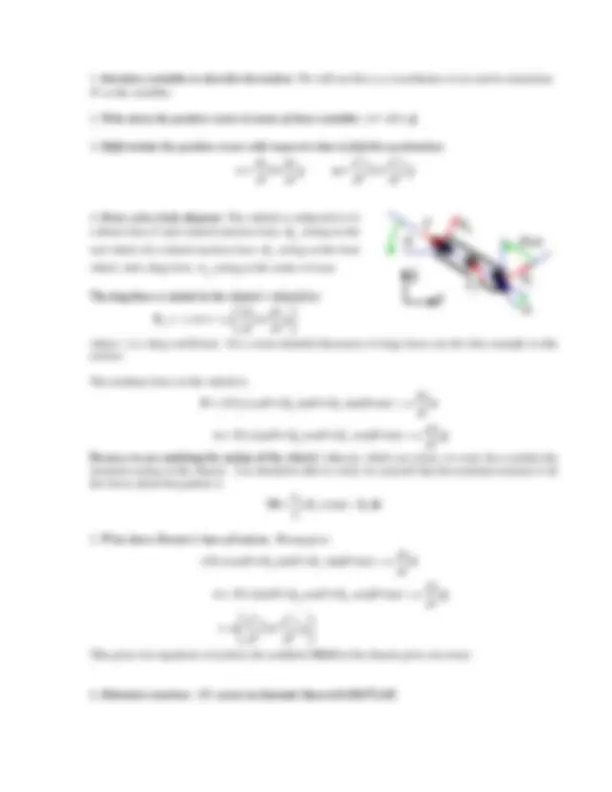
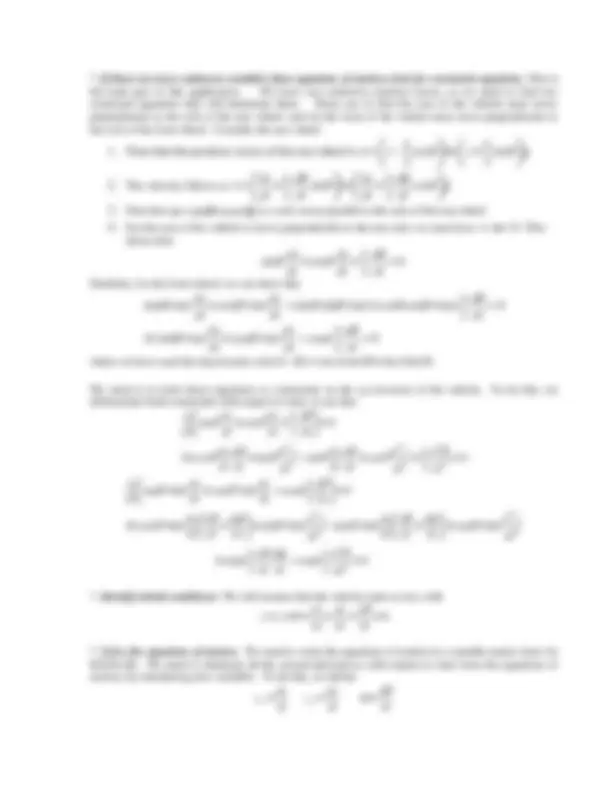
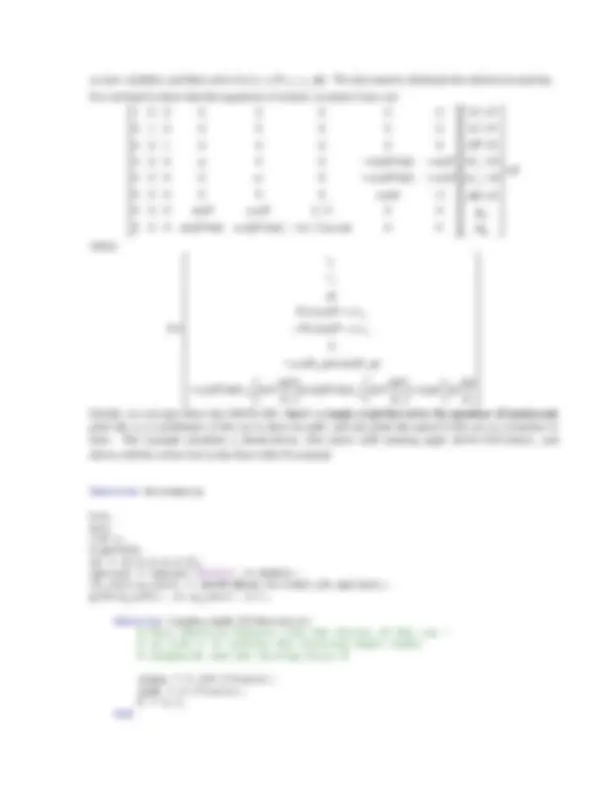
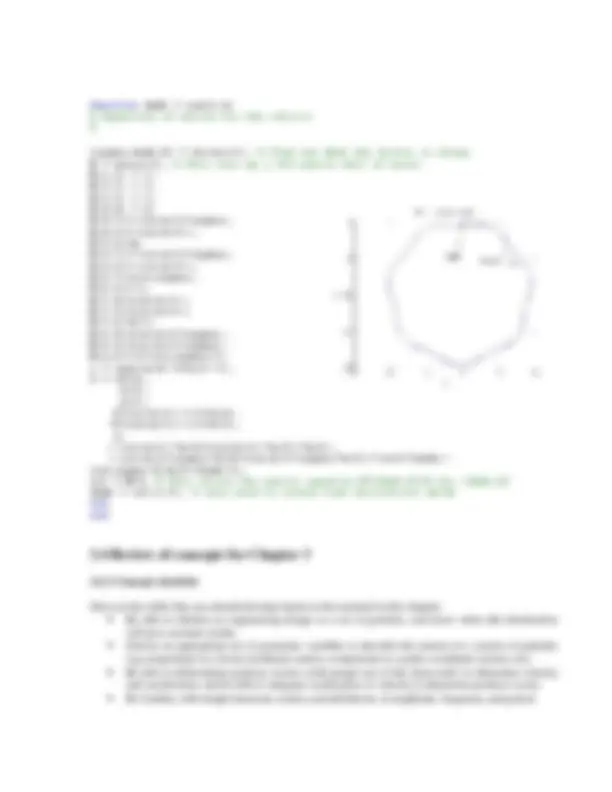
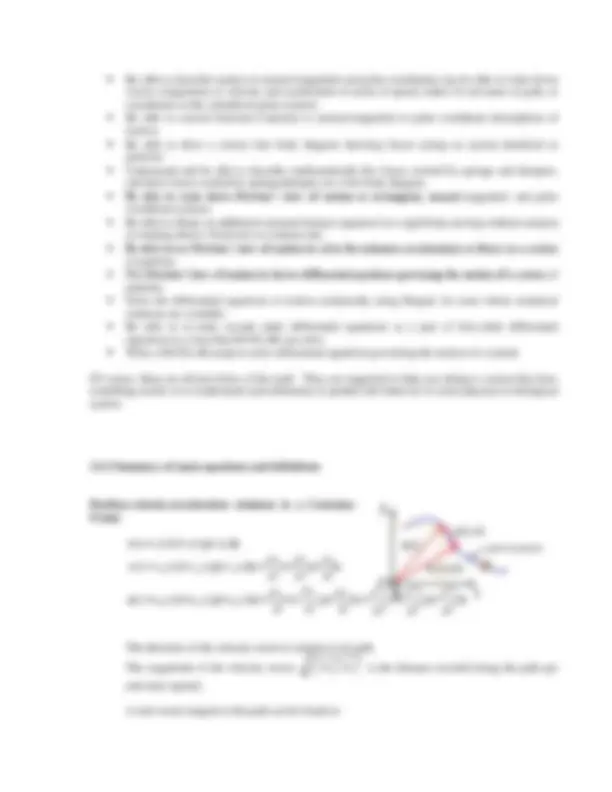
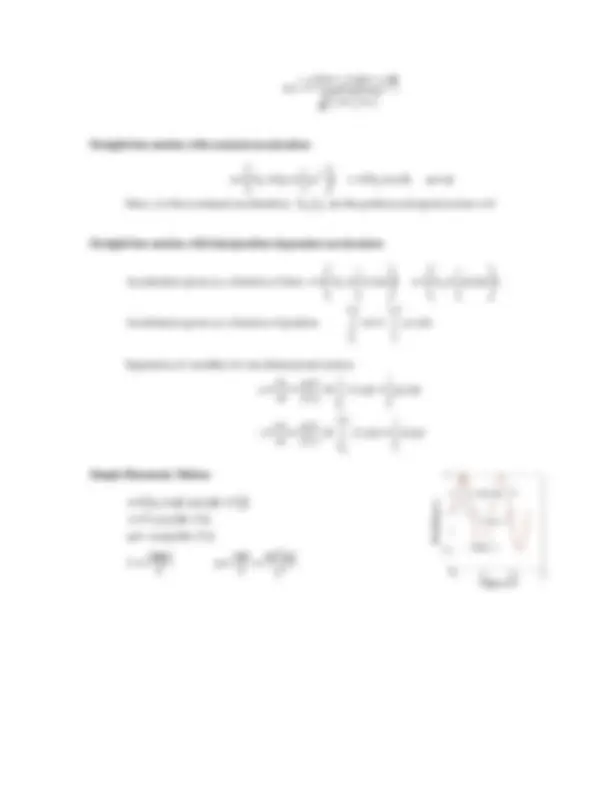
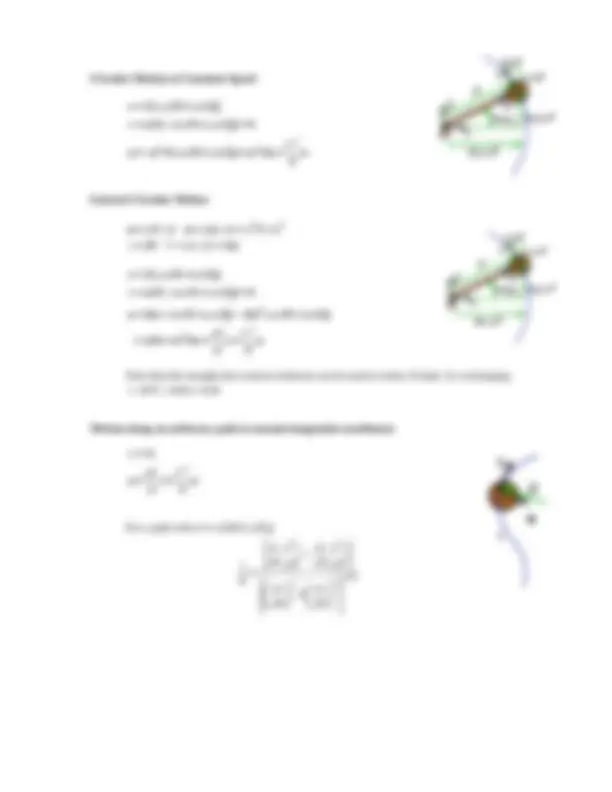
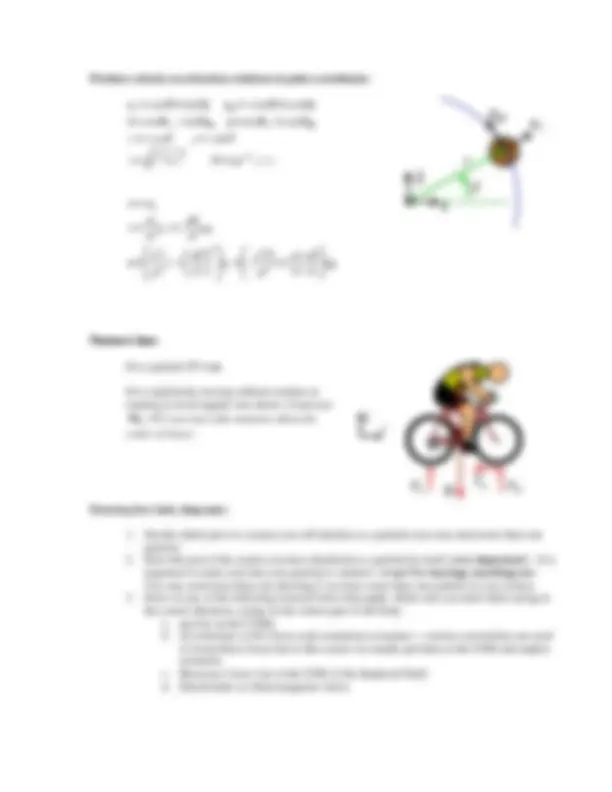
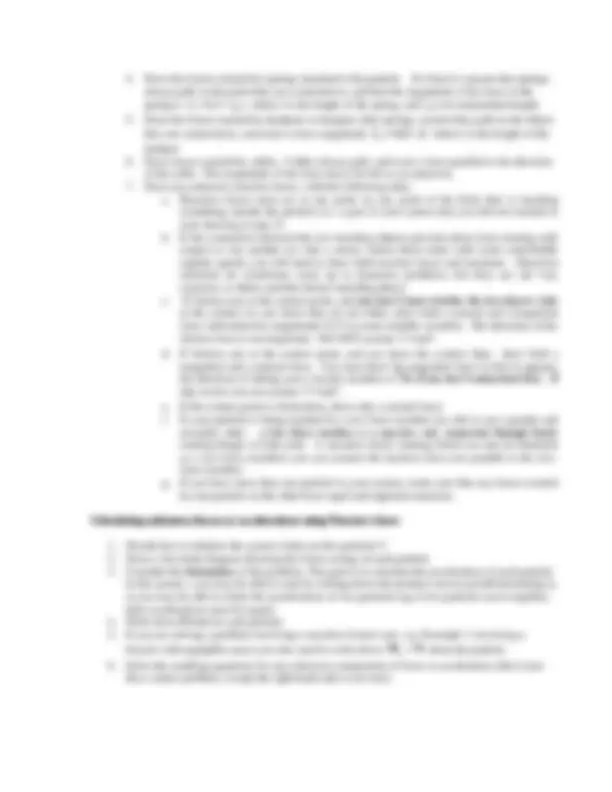

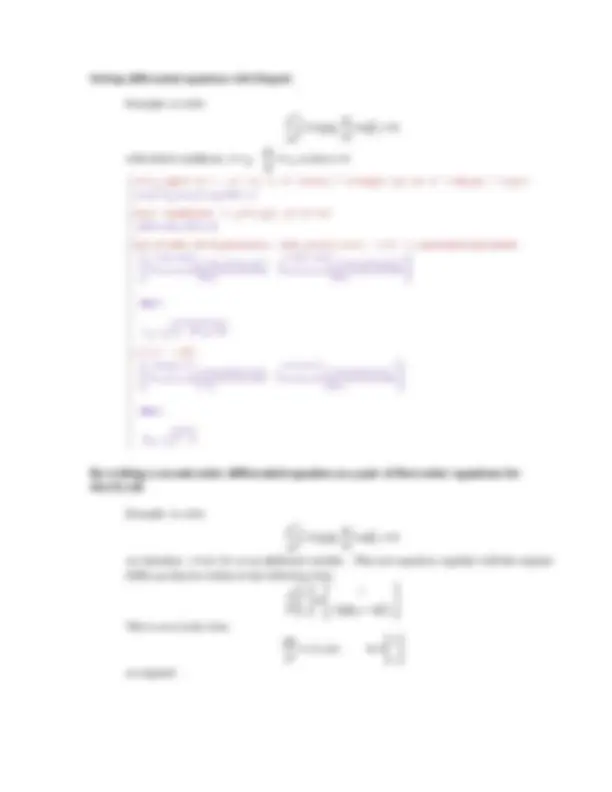


Study with the several resources on Docsity

Earn points by helping other students or get them with a premium plan


Prepare for your exams
Study with the several resources on Docsity

Earn points to download
Earn points by helping other students or get them with a premium plan
Community
Ask the community for help and clear up your study doubts
Discover the best universities in your country according to Docsity users
Free resources
Download our free guides on studying techniques, anxiety management strategies, and thesis advice from Docsity tutors
The key points are:Motion of Systems of Particles, Equations of Motion, Definition of Particle, Concept of Particle, Acceleration Relations, Newton’s Laws of Motion, Rotational Inertia, Cartesian Coordinates, Position Relations
Typology: Study notes
1 / 64

This page cannot be seen from the preview
Don't miss anything!

























































In this chapter, we shall discuss
The focus of this chapter is on setting up and solving equations of motion – we will not discuss in detail the behavior of the various examples that are solved.
We start with some basic definitions and physical laws.
3.1.1 Definition of a particle
A `Particle’ is a point mass at some position in space. It can move about, but has no characteristic orientation or rotational inertia. It is characterized by its mass.
Examples of applications where you might choose to idealize part of a system as a particle include:
Obviously, if you choose to idealize an object as a particle, you will only be able to calculate its position. Its orientation or rotation cannot be computed.
3.1.2 Position, velocity, acceleration relations for a particle (Cartesian coordinates)
In most practical applications we are interested in the position or the velocity (or speed) of the particle as a function of time. But Newton’s laws will only tell us its acceleration. We therefore need equations that relate the position, velocity and acceleration.
Position vector: In most of the problems we solve in this course, we will specify the position of a particle using the Cartesian components of its position vector with respect to a convenient origin. This means
r
In dynamics problems, all three components can be functions of time.
Velocity vector: By definition, the velocity is the derivative of the position vector with respect to time (following the usual machinery of calculus)
0
Velocity is a vector, and can therefore be expressed in terms of its Cartesian components v vx i vy j vz k
You can visualize a velocity vector as follows The direction of the vector is parallel to the direction of motion
The magnitude of the vector v v v^2 x^ v^2 (^) y^ vz^2 is the speed of the particle (in meters/sec, for example).
When both position and velocity vectors are expressed in terms Cartesian components, it is simple to
(independent of time) and so
This is really three equations – one for each velocity component, i.e.
x y z
Acceleration vector: The acceleration is the derivative of the velocity vector with respect to time; or, equivalently, the second derivative of the position vector with respect to time.
0
t
Like velocity, acceleration has magnitude and direction. Sometimes it may be possible to visualize an acceleration vector – for example, if you know your particle is moving in a straight line, the acceleration vector must be parallel to the direction of motion; or if the particle moves around a circle at constant speed, its acceleration is towards the center of the circle. But sometimes you can’t trust your intuition regarding the magnitude and direction of acceleration, and it can be best to simply work through the math.
The relations between Cartesian components of position, velocity and acceleration are
r x t ( ) i (^) X (^) 0 X sin(2 t / T ) i
Here X 0 is the average length of the spring, X (^) 0 X is the maximum length of the spring, and T is the
time for the mass to complete one complete cycle of oscillation (this is called the `period’ of oscillation).
Harmonic vibrations are also often characterized by the frequency of vibration: The frequency in cycles per second (or Hertz) is related to the period by f=1/T
The motion is plotted in the figure on the right.
The velocity and acceleration can be calculated by differentiating the position, as follows
2 2 2 2
cos(2 / )
sin(2 / )
dx t X t T dt T
d x t X t T dt T
v i i
a i i
Note that: The velocity and acceleration are also harmonic, and have the same period and frequency as the displacement. If you know the frequency, and amplitude and of either the displacement, velocity, or acceleration, you can immediately calculate the amplitudes
Example 3: Motion at constant speed around a circular path Circular motion is also very common – examples include any rotating machinery, vehicles traveling around a circular path, and so on.
The simplest way to make an object move at constant speed along a circular path is to attach it to the end of a shaft (see the figure), and then rotate the shaft at a constant angular rate. Then, notice that The angle increases at constant rate. We can write
shaft, in radians/seconds.
For this example the position vector is
(^) t
R cos^
R sin^
cos
The velocity can be calculated by differentiating the position vector.
sin cos ( sin cos )
d d d R R R dt dt dt
r v i j i j
Here, we have used the chain rule of differentiation, and noted that d / dt .
The acceleration vector follows as d (^) R ( d (^) cos d sin ) R (^2) (cos sin ) dt dt dt
v a i j i j
Note that
We can write these mathematically as 2 d (^) R V d (^) R 2 V dt dt R
r v v t t a n n
Example 4: More general motion around a circular path
We next look at more general circular motion, where the particle still moves around a circular path, but does not move at constant speed. The angle is now a general function of time.
We can write down some useful scalar relations:
Angular rate:
d dt
Angular acceleration
2 2
d d dt (^) dt
Speed
d V R R dt
Rate of change of speed
2 2
dV d d R R R dt (^) dt dt
We can now calculate vector velocities and accelerations
The velocity can be calculated by differentiating the position vector.
sin cos ( sin cos )
d d d R R R dt dt dt
r v i j i j
The acceleration vector follows as
2
( sin cos ) ( cos sin )
( sin cos ) (cos sin )
d d d d R R dt dt dt dt R R
v a i j i j
i j i j
R cos^
R sin^
cos^
As you’ve already seen in EN3, Matlab can make very long and complicated calculations fairly painless. It is a godsend to engineers, who generally find that every real-world problem they need to solve is long and complicated. But of course it’s important to know what the program is doing – so keep taking those math classes…
3.1.4 Velocity and acceleration in normal-tangential and cylindrical polar coordinates.
In some cases it is helpful to use special basis vectors to write down velocity and acceleration vectors, instead of a fixed { i,j,k } basis. If you see that this approach can be used to quickly solve a problem – go ahead and use it. If not, just use Cartesian coordinates – this will always work, and with MAPLE is not very hard. The only benefit of using the special coordinate systems is to save a couple of lines of rather tedious trigonometric algebra – which can be extremely helpful when solving an exam question, but is generally insignificant when solving a real problem.
Normal-tangential coordinates for particles moving along a prescribed planar path
In some problems, you might know the particle speed, and the x,y coordinates of the path (a car traveling along a road is a good example). In this case it is often easiest to use normal-tangential coordinates to describe forces and motion. For this purpose we Introduce two unit vectors n and t , with t pointing tangent to the path and n pointing normal to the path, towards the center of curvature Introduce the radius of curvature of the path R.
If you happen to know the parametric equation of the path (i.e. the x,y coordinates are
2 2 2 2
dx dy dy dx d d d d d x y d d (^) dx dy dx dy d (^) d d d d
i j i j r r i j t n r
The sign of n should be selected so that
2 2 2 2 0
d x d y
i j n
The radius of curvature can be computed from 2 2 2 2
2 2 3/
dx d y dy d x d (^) d d d R dx dy d d
The radius of curvature is always positive.
The direction of the velocity vector of a particle is tangent to its path. The magnitude of the velocity vector is equal to the speed.
The acceleration vector can be constructed by adding two components: the component of acceleration tangent to the particle’s path is equaldV / dt The component of acceleration perpendicular to the path (towards the center of curvature) is equal to V^2 / R.
Mathematically
dV V^2 V dt R
v t a t n
Example: Design speed limit for a curvy road: As a consulting firm specializing in highway design, we have been asked to develop a design formula that can be used to calculate the speed limit for cars that travel along a curvy road.
The following procedure will be used: The curvy road will be approximated as a sine wave
engineers will measure values of A and L that fit the path. Vehicles will be assumed to travel at constant speed V around the path – your mission is to calculate the value of V For safety, the magnitude of the acceleration of the car at any point along the path must be less than 0.2g, where g is the gravitational acceleration. ( Again, note that constant speed does not mean constant acceleration, because the car’s direction is changing with time).
Our goal, then, is to calculate a formula for the magnitude of the acceleration in terms of V , A and L. The result can be used to deduce a formula for the speed limit.
Calcluation:
We can solve this problem quickly using normal-tangential coordinates. Since the speed is constant, the acceleration vector is
V^2 R
a n
formula
2 2 2 2 2 2
r
r
dr d r dt dt d r d d dr d r r dt dt^ dt dt dt
v e e
a e e
Deriving these results takes some tedious algebra, but it’s conceptually simple – here’s what we do:
Here are the details with Mupad taking care of the tedious algebra.
These are the answers stated.
Example The robotic manipulator shown in the
about the k axis. Find a formula for the maximum allowable (constant) rate of extension dL / dt if the acceleration of the gripper may not exceed g.
We can simply write down the acceleration vector, using polar coordinates. We identify
2 (^2 2 22 4 4 2 12) / 2 2 2 r 4
dL dL dL L L g g L dt^ dt dt
a e e a
L
i
j
k
i
j
e^ er
Other examples using polar coordinates can be found in sections below.
3.1.5 Measuring position, velocity and acceleration
If you are designing a control system, you will need some way to detect the motion of the system you are trying to control. A vast array of different sensors is available for you to choose from: see for example the list at http://www.sensorland.com/HowPage001.html. A very short list of common sensors is given below
Accelerometers are also often used to construct an ‘ inertial platform,’ which uses gyroscopes to maintain a fixed orientation in space, and has three accelerometers that can detect motion in three mutually perpendicular directions. These accelerations can then be integrated to determine the position. They are used in aircraft, marine applications, and space vehicles where GPS cannot be used.
3.1.6 Newton’s laws of motion for a particle
Newton’s laws for a particle are very simple. Let
Newton’s laws of motion can be used to calculate the forces required to make a particle move in a particular way.
We use the following general procedure to solve problems like this (1) Decide how to idealize the system (what are the particles?) (2) Draw a free body diagram showing the forces acting on each particle (3) Consider the kinematics of the problem. The goal is to calculate the acceleration of each particle in the system – you may be able to start by writing down the position vector and differentiating it, or you may be able to relate the accelerations of two particles (eg if two particles move together, their accelerations must be equal). (4) Write down F= m a for each particle. (5) If you are solving a problem involving a massless frames (see, e.g. Example 3, involving a
(5) Solve the resulting equations for any unknown components of force or acceleration (this is just like a statics problem, except the right hand side is not zero).
It is best to show how this is done by means of examples.
Example 1: Estimate the minimum thrust that must be produced by the engines of an aircraft in order to take off from the deck of an aircraft carrier (the figure is from www.lakehurst.navy.mil/NLWeb/media-library.asp)
We will estimate the acceleration required to reach takeoff speed, assuming the aircraft accelerates from zero speed to takeoff speed along the deck of the carrier, and then use Newton’s laws to deduce the force.
Data/ Assumptions:
aircraft.
Calculations:
aircraft due to its engines.
takeoff roll. We can therefore write down the position vector r and velocity v of the aircraft at takeoff, and use the straight line motion formulas for r and v to calculate the time t to reach takeoff speed and the acceleration a. Taking the origin at the initial position of the aircraft, we have that, at the instant of takeoff (^12) 2 t
r d i at i v v i at i
This gives two scalar equations which can be solved for a and t 2 1 2 2 2 2
t t t
v d d at v at a t d v
2
t T
v F ma m d
i i i
2
t T
v F m d
Substituting numbers gives the magnitude of the force as F= 222 kN. This is very close, but slightly greater than, the 200kN (44000lb) thrust quoted on the spec sheet for the Hornet. Using a catapult to accelerate the aircraft, speeding up the aircraft carrier, and increasing thrust using an afterburner buys a margin of safety.
Example 2: Mechanics of Magic! You have no doubt seen the simple `tablecloth trick’ in which a tablecloth is whipped out from underneath a fully set table (if not, you can watch it at http://wm.kusa.gannett.edgestreams.net/news/1132187192333- 11-16-05-spangler-2p.wmv)
In this problem we shall estimate the critical acceleration that must be imposed on the tablecloth to pull it from underneath the objects placed upon it.
We wish to determine conditions for the tablecloth to slip out from under the glass. We can do this by calculating the reaction forces acting between the glass and the tablecloth, and see whether or not slip will occur. It is best to calculate the forces required to make the glass move with the tablecloth (i.e. to prevent slip), and see if these forces are big enough to cause slip.
i
j
rider’s COM, the wheelbase L and the distance of the COM from the rear wheel. b. We assume that the bike is a massless frame. The wheels are also assumed to have no mass.
analyzed using methods of statics. If you’ve forgotten how to think about statics of wheels, you should re-read the notes on this topic – in particular, make sure you understand the nature of the forces acting on a freely rotating wheel (Section 2.4.6 of the reference notes). c. We assume that the rider brakes so hard that the front wheel is prevented from rotating. It must therefore skid over the ground. Friction will resist this sliding. We denote the friction
d. The rear wheel is assumed to rotate freely. e. We neglect air resistance.
where a is unknown.
It’s very simple to do the moment calculation by hand, but for those of you who find such calculations unbearable here’s a Mupad script to do it. The script simply writes out the position vectors of points A and B relative to the center of mass as 3D vectors, writes down the reactions at A and B as 3D vectors, and calculates the resultant moment (we don’t bother including the weight, because it acts at the origin and so exerts zero moment)
scalar equations
i
j
B A B B A B
another equation. The missing equation is the friction law
We are interested in finding what makes the reaction force at A go to zero (that’s when the bike is about to tip). So
This tells us that the bike will tip if the friction coefficient exceeds a critical magnitude, which depends on the geometry of the bike. The simplest way to design a tip-resistant bike is to make the height of the center of mass h small, and the distance ( L-d) between the front wheel and the COM as large as possible.
A `recumbent’ bike is one way to achieve this – the figure (from http://en.wikipedia.org/wiki/Recumbent_bicycle) shows an example. The recumbent design offers many other significant advantages over the classic bicycle besides tipping resistance.
Example 5: Another stupid FE exam problem: The figure shows a small block on a rotating bar. The contact
critical angular velocity that will just make the block start
The general approach to this problem is the same as for the Magic trick example – we will calculate the reaction force exerted by the bar on the block, and see when the forces are large enough to cause slip at the contact. We analyze the motion assuming the slip does not occur, and then find out the conditions where this can no longer be the case.
clearly rotating. We hope that because it rotates at constant rate, the rotation will not have a significant effect – but we can only check this once we know how to deal with rotational motion.
subjected to a vertical gravitational force, and reaction forces at the contact with the bar. Since we have assumed that the contact is not slipping, we can choose the direction of the tangential component of the reaction force arbitrarily. The resultant force on the block is
To find the point where the block just starts to slip, we use the friction law. Recall that, at the point of slip
friction force must oppose sliding, the block must slide outwards, i.e. r is increasing during slip.
Alternative method of solution using normal-tangential coordinates
We will solve this problem again, but this time we’ll use the short-cuts described in Section 3.1.4 to write down the acceleration vector, and we’ll write down the vectors in Newton’s laws of motion in terms of the unit vectors n and t normal and tangent to the object’s path.
(i) Acceleration vector If the block does not slip, it moves
direction parallel to the unit vector n.
(ii) The force vector can be resolved into components parallel to n and t. Simple trig on the free body diagram shows that
(iii) Newton’s laws then give
The components of this vector equation parallel to t and n yield two equations, with solution
This is the same solution as before. The short-cut makes the calculation slightly more straightforward. This is the main purpose of using normal-tangential components.
Example 6: Window blinds. Have you ever wondered how window shades work? You give the shade a little downward jerk, let it go, and it winds itself up. If you pull the shade down slowly, it stays down.
The figure shows the mechanism (which probably only costs a few cents to manufacture) that achieves this remarkable feat of engineering. It’s called an `inertial latch’ – the same principle is used in the inertia reels on the seatbelts in your car.
The picture shows an enlarged end view of the window shade. The hub, shown in brown, is fixed to the bracket supporting the shade and cannot rotate. The drum, shown in peach, rotates as the shade is pulled up or down. The drum is attached to a torsional spring, which tends to cause the drum to rotate counterclockwise, so winding up the shade. The rotation is prevented by the small dogs, shown in red, which engage with the teeth on the hub. You can pull the shade downwards freely, since the dogs allow the drum to rotate counterclockwise.
To raise the shade, you need to give the end of the shade a jerk downwards, and then release it. When the drum rotates sufficiently quickly (we will calculate how quickly shortly) the
Stationary Hub Rotating Drum (^) Window shade
Stationary Hub